We have received many questions in the last few days regarding orders and delivery. We would like to reassure you that our distribution centres are fully open and all our office team are now working from home.
There was a sudden increase in demand for some products and there may be slightly longer delivery times than normal as a result. We have lots more products already on their way and you can pre order online now. Next to the buy button you will be shown an estimated dispatch date and it’s also shown in your basket.
We will email you again when the order is dispatched and you can always check in with our brilliant customer service team anytime to modify your order.
Please note that once your product has been dispatched you should use the shipping companies tracking services to keep up to date with your orders progress. We will always email you your tracking details. Deliveries are sometimes taking a little longer than normal as the couriers have to react to any changes to their ability to deliver. Please also note that you may receive your order in more than one delivery on two separate days.
The Omlet Team is here for you! We will still be running our usual promotions and competitions (check our social media channels and newsletter for latest) and we’ll be doing our best to keep you and your pets entertained throughout the next few weeks.
The Omlet Team
This entry was posted in Pets on March 25th, 2020 by linnearask
We’ve all been asked the age-old question at some point in our lives… “Are you a cat person, or a dog person?”
For those who reply “cat person” you will likely have had the confusing but unsurprising reply of “No way! I HATE cats!”
But why? So many people have strong feelings against cats, and most of the time can’t even justify their negativity. While some reasons can be understandable, others are just plain unreasonable! Here are a few reasons why our feline friends gained so many haters…
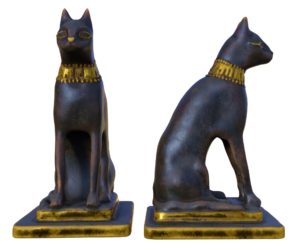 Myths and history
Myths and history
If we look back into Ancient Egyptian history, we will see that cats were considered magical beings, protectors and a sign of good luck by the Egyptians, and they even worshipped a Cat Goddess, named Bastet.
So how have we become a world completely split over whether cats are good or bad?
Throughout history, other countries have had mixed thoughts on the symbolism of cats. The main myth that has been carried through to the present day is most damaging to the reputation of the black cat. Some say if a black cat crosses your path you will have bad luck, others believe black cats are actually witches in disguise. Despite neither of these conspiracies holding any weight in truth, they still impact black cat adoption rates to this day, and may go somehow in explaining why so many people feel uneasy around cats of any colour.
Bad experiences
A common reason for the hate towards cats is related back to bad experiences that may have happened as early as childhood. It normally follows a story of visiting a family or friends house as a kid, and being swiped, bit, scratched or hissed at by the resident cat, with rarely any mention of what the disrespectful child-self may have done to provoke said cat.
Some people fear dogs for the same reason too so it definitely isn’t the main cause of hostility. We can only hope that someday these people may come around to the fact that it is very rare for a cat to attack for no reason, as an adult you are going to be better at reading the signals of a cat who would like some space.
Independent creatures
Yes, okay, sometimes cats aren’t as affectionate as dogs but this is because they are typically more independent. However, the notion suggested by some cat-haters that cats aren’t capable of loving their owners at all, is just plain silly.
Some cats who have bad experiences with humans, may be more wary or even fearful of us, and will likely have got used to their own company and learnt to fend for themselves. But even the most frightened and isolated cats learn to enjoy human company again, after lots of love, care and affection.
There are lots of fascinating ways that cats show they love their owners and you can read all about those here.
Neighbour’s cat
If your neighbour’s cat is causing a mess in your garden or terrorising your chickens, it is understandable that some anger may develop towards the whole species. However, that behaviour is not a reflection on all cats, so don’t paint them all with the same brush!
You might, however, like to place the responsibility on the cats’ owners and suggest solutions to prevent upsetting neighbours, such as an outdoor pet enclosure for cats to spend time outdoors without getting up to mischief. Some people even walk their cats on a lead when they are new to an area to show them where they can go – whether this works or not is debatable.
“Dogs are cuter”
Some people are just die hard dog fans and we have to accept that, but the argument of which pet is “cuter” is entirely subjective and shouldn’t be taken as truth. If you think cats are cuter, then good for you! Cats should have as much chance as any other pet in finding a happy and loving home for life, and if you give them everything they need to be safe and content, they will love you right back.
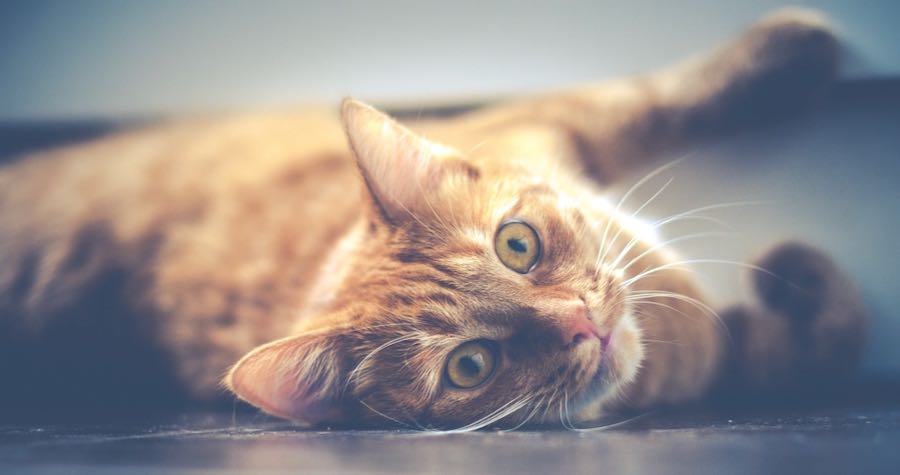
This entry was posted in Cats on March 15th, 2020 by linnearask

Do you like travelling and seeing new places?
A: “Home is where the heart is”, as I always say. That’s where I feel the happiest.
B: I love exploring new places, and I’m always looking for a new place to visit.
C: I like the occasional holiday as a treat, but I prefer going places where I’ve already been.
D: I love going somewhere warm, but while there I mainly spend time by the pool.
How do you feel about children?
A: I LOVE children, they are so CUTE. And they say the funniest things!
B: Kids are like small adults really: I like some and find others quite annoying.
C: I don’t love babies, but once you can talk to them they are quite fun to be around.
D: Honesty, I don’t think they are worth the effort.
What’s your role in a group?
A: I normally stay in the background and let other people decide – it’s easier that way.
B: I tend to bond with the people who I have the most in common with and stick to them. I’m not really a people pleaser.
C: I often get the leader role without actually asking for it. Maybe I give off assertiveness? I don’t mind though, I quite enjoy it.
D: I’m normally the loud one who tries to make sure everyone is happy and that there is no awkwardness.
Would you say you’re friendly?
A: I get on with most people, and it’s important to me to be liked.
B: Yeah I suppose so. I’m extremely generous to people I like, but I don’t spend time and energy on being nice to people who I don’t like.
C: Yes, definitely. I’m curious, so I like meeting new people.
D: I can be a bit suspicious in the beginning, so maybe I don’t always come across as the friendliest of people.
How clean and tidy are you?
A: I really don’t like being dirty, and I keep my home spotless.
B: I’d say the perfect amount, but I think others would probably say I’m on the slightly messy side.
C: Can I say medium? Medium.
D: I’m not super fussed, mainly because there is always something more fun to do than to clean.
What would you say is your greatest quality?
A: I’m very easygoing.
B: I stand up for what I believe in.
C: I’m very friendly.
D: I’m ambitious and proactive.
How would you describe your sense of style?
A: I’m quite interested in fashion, especially shoes. You could say shoes are a bit of an obsession of mine.
B: The most important thing for me is that the things I wear are comfortable.
C: Elegant and classic.
D: I like big bold patterns, but my wardrobe is mainly black and white with a few colourful additions.

Mostly A: You’re a Cochin
Just like the fluffy Cochin, you are humble and appreciate the simple things in life. Because of your friendly demeanour you tend to get on well with most people and pets, but just like the Cochin sometimes becomes the submissive breed in a mixed flock you need to work on standing up for yourself to make sure no one takes advantage of you. You’re not particularly adventurous, but prefer to spend time at home with family and friends over crazy nights out, just like the Cochin. These rather lazy chickens stay close to the ground and prefer not to get their feathered feet dirty. They also have a strong maternal instinct and run the risk of regularly going broody.

Mostly B: You’re an Old English Game
These beautiful small chickens are one of the oldest breeds around. Just like you they are active and confident, always on the lookout for new things to explore. You are family orientated and very generous to those close to you. This can however mean that you find it hard to forgive people who have hurt you or the people you love, and you are quite happy to fight someone who you don’t agree with. Old English Game are hardy and quite noisy, and don’t do well with confinement. They are small and very friendly to humans, but especially roosters have an aggressive side to them, probably due to the fact that they descend from cockfighting birds.

Mostly C: You’re a Leghorn
You are an ambitious and hardworking person, and you tend to be the center of attention in any situation. Just like the Leghorn you’re not fussy and can handle most things life throws at you, but don’t like losing control. Due to their independent nature, Leghorns are difficult to tame, and if given the opportunity they will roost in trees. They are not natural sitters, but will care for their own children. They produce plenty of eggs and will be assertive but friendly towards humans.

Mostly D: You’re an Ancona
Just like these beautifully spotty birds you are independent and assertive, and will always be busy with something. You are open and friendly and take the role of the joker in a group, but it can take a while to get close to you as you only open up to those who you really trust. Anconas are happiest if they get to free range and forage for food during the day, but then return to the safety of a comfy coop. They produce a good amount of eggs, but are notoriously famous for their inability to sit on the eggs – just like you they don’t find babies that interesting.
This entry was posted in Chickens on March 12th, 2020 by linnearask
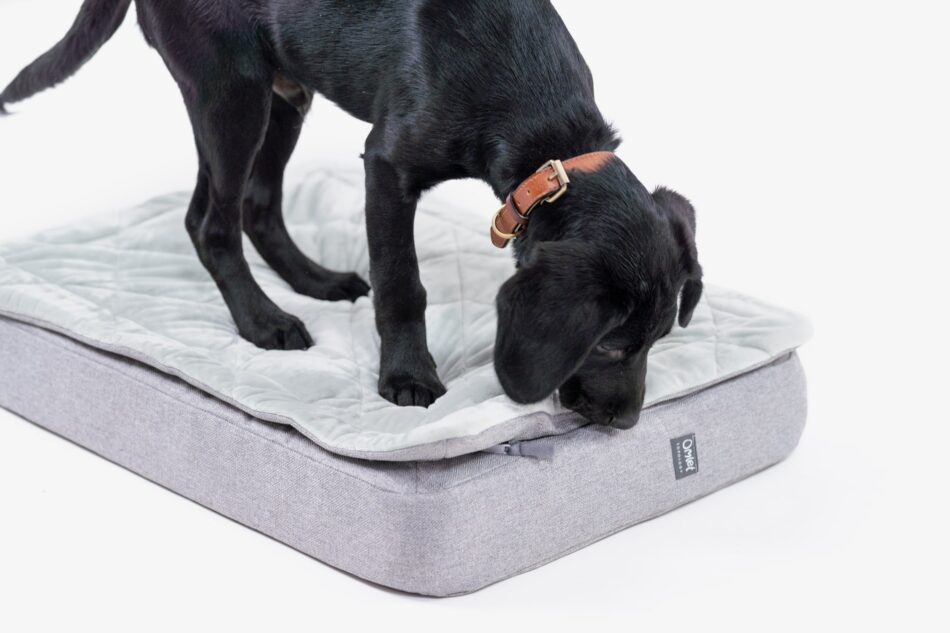
You’re getting a puppy – congratulations! But before bringing your furry family member home, make sure to tick these off your new puppy shopping list. Despite all the excitement that comes with having a new pet, the experience is also pretty full-on, as they’ll require almost constant attention and care. So, to minimize the stress and make the next few months as enjoyable as possible for everyone involved, having a checklist will definitely help.
Dog bed and blanket
Growing puppies spend most of their days sleeping, so they need a comfortable dog bed to rest on. The Omlet Topology Puppy Bed has a memory foam mattress base that will sculpt itself around your puppy’s body, providing support and comfort after hours of play. Additionally, the Quilted topper can easily be zipped off and placed in the washing machine, then quickly zipped back on for that fresh sheet feeling.
We know that puppies chew…And as much as we can try to redirect their razor-sharp teeth to gnawing on appropriate dog toys instead, this behavior is only natural, meaning that their dog beds can often be at the receiving end. That’s why we designed the Omlet Topology Puppy Bed, with a durable, hard-wearing topper which even the sharpest teeth can’t destroy. But, in the highly unlikely event that your puppy does manage to chew through their mattress to the extent that you can no longer zip it onto their mattress within 6 months, we’ll replace it for free. Find out more about the Omlet 180 Day Puppy Guarantee here.
For ultimate levels of comfort, be sure to tick a super soft dog blanket off your new puppy shopping list, too. Before bringing your puppy home, you can ask your breeder to provide a blanket as well. This way, your puppy will have a familiar scent to travel with, offering them some extra comfort for their journey. Once home, you can place their blanket in their crate, on their bed, on the sofa, or in the car.
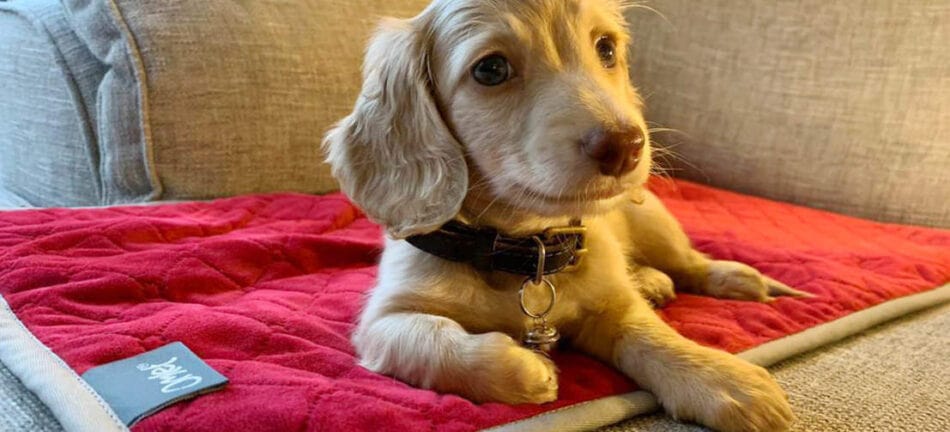
Chew toys
Although we can’t promise that your new puppy won’t still try their very best to chew through your favorite shoes, having a range of puppy chew toys will help to minimize the chances. Puppies explore the world with their mouths, with some dog breeds mouthier than others.
Giving your puppy some chew toys will ease the itch and blow off some steam. You’ll want to find a few that are the right size and hardness for your growing dog, so make sure you have a wide selection at hand. It’s a good idea to stock up on plenty of chew toys such as a Kong before your puppy arrives, which will also keep them entertained for hours. You can find plenty of Kong recipes here, but just be sure that anything you feed your puppy is age appropriate.
Training treats
Puppy training can start as soon as you bring your new furry friend home, usually at 8 weeks old. Make sure that you have plenty of puppy-appropriate treats to reward your dog when they’re being well-behaved. This way, they’ll soon learn which behaviors are desirable, and which are not. The world can be rather intimidating for a small puppy, so always offer plenty of praise when you reward them with a treat, which will also help to continue to strengthen your bond.
All dogs are different, with some dog breeds more food-motivated than others. So, as you get to know your puppy’s personality type more, you might notice that yours responds better to being rewarded with dog toys, or praise.
Food and bowls
Treats are tasty but a diet full of them definitely doesn’t make for a healthy puppy. You’ll need to have suitable food before bringing your puppy home, but the breeder will have likely already given you instructions on what and when to feed them. Stick to this diet for the first few weeks to avoid causing stomach upset. Should you decide on another type of food for your puppy after this, introduce the food gradually, making sure it’s of high quality and suitable for growing pups.
You’ll also need dog bowls for food and water. These both need to be of a suitable size – not deep enough to not create lots of mess, but stable enough to not tip over. For the dog bowl that’s just right, always be sure to read the diameter so that you can pick the perfect size for your specific puppy. It’s also a good idea to have a few travel-sized bowls that you can bring on your fun dog adventures once your pup is old enough.
Dog crate
Some breeders will have already started crate training the puppy from an early age, but if they haven’t, it’s definitely not too late to start when they arrive home.
The crate acts as an enclosed safe space for your puppy and should be a place they can return to when they’re tired or even feeling a little nervous. The Fido Nook 2-in-1 Luxury Dog Crate and Bed designed by Omlet is a great option. This beautifully designed den is a super cozy spot, with a super convenient wardrobe where you can store all of your dog’s things in one handy place. Plus, it looks great in any room of the house! Remember that puppies grow quickly, so get a crate that will also fit your dog when they’re fully grown.
Collar and lead
As soon as your puppy is ready to go out into the real world, they’ll need a stylish collar to put their ID tag on. Match with a lead or harness, and you’re ready to go. With Omlet’s Dog Walk Collection, you can even match your pup’s collar and dog leash to their bed, with 8 signature prints inspired by the dog walk, to choose from. Whilst you won’t be able to take your puppy on walks until they’re fully vaccinated, you can get them used to wearing a collar and leash from a younger age. You’ll even find that some breeders will use a very soft collar on each puppy from the litter, which not only helps potential adopters identify which puppy is which, but gets them used to this feeling.

Omlet and your new puppy
These are some of the most important things to get before you go to pick up your puppy but you’ll find additional items such as grooming equipment and cleaning products can be bought within the first few weeks. But, with the help of Omlet’s Topology Puppy Bed, dog crate, dog blanket and the other above essentials, the puppy with be off to a great start before their arrival.
This entry was posted in Dogs on March 9th, 2020 by linnearask
…make it the Peck Toy!

Here’s why the Peck Toy is the perfect choice for your chickens…
- The Peck Toy ensures a slow rate of feed release which is perfect for use with treats to prevent your chickens having too much at once, while keeping them satisfied throughout the day.
- The Peck Toy is also a great way of keeping your chickens entertained throughout the day, especially ideal for wet or windy days when they would prefer not to leave the protection of their run, or if you are unable to let them out to free range. The Peck Toy offers an interesting, reward-based game for them to play with all day long.
- Available in 2 designs to suit your coop requirements and chickens, the Peck Toy can either be hanging from your run so it swings as your chickens peck at it for treats, or free standing, placed in the ground in their run or anywhere in your garden.
- Use for any of your chickens’ three nutritional needs – treats, feed or grit. The number of Peck Toys you need will vary depending on the use, for example 1 peck toy is suitable as a treat dispenser for 4 medium sized chickens, or as a feed dispenser for 2 medium sized chickens. 1 peck toy is also enough for 6 chickens if used as a grit dispenser.
- Placing treats or feed in a dispenser also helps to improve run hygiene as it prevents the ground being covered in more treats and feed than your chickens need or want. This is most beneficial for preventing rodents becoming interested in your coop and run.
- You can save 50% on the Peck Toy this weekend only when you sign up to the Omlet newsletter. This is an eggcellent opportunity to snap up a great deal and treat your chickens to a new toy for the spring. Get your unique discount code on the Peck Toy page here.
Now available from $10.99, or $5.50 when you sign up to the Omlet newsletter.
Terms and conditions
This promotion is only valid from 03/05/20 – midnight on 03/09/20. Once you have entered your email address on the website you will receive a unique discount code that can be used at checkout. By entering your email you agree to receive the Omlet Newsletter. You can unsubscribe at any point. This offer is available on single Poppy and Pendant Chicken Peck Toys only. The offer does not apply to Twin Packs or Twin Pack with Caddi Treat Holder. Offer is limited to 2 Peck Toys per household. Subject to availability. Omlet ltd. reserves the right to withdraw the offer at any point. Offer cannot be used on delivery, existing discounts or in conjunction with any other offer.
This entry was posted in Chickens on March 5th, 2020 by linnearask
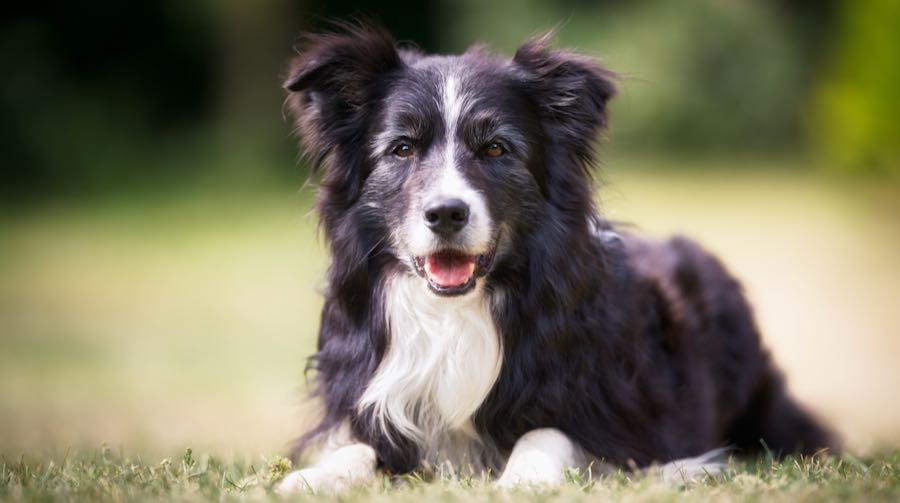
All dogs are smart. That’s because their ancestor, the wolf, is very clever, so dogs’ brains had a great starting point. Even the breeds fondly described as “lovably clueless” are still relatively clever compared to most other animals!
The question of why wolves, and therefore dogs, are clever is simple. They hunt, in packs, using various strategies including herding; and they live in hierarchies of ‘top dogs’, alphas, and various layers of underlings. All in all, it’s a complex business being a canine, and only a top-notch brain is going to succeed.
The cleverest domestic dogs, then, tend to be the ones that retain an element of ancestral wolf instincts. That instinct comes in two forms – the herders (including all the sheepdogs), and the out-and-out hunters.
What Makes a Clever Dog?
Being human, we tend to judge other animals on our terms. Therefore, dogs that respond well to human training and learn to be obedient are the ones we think of as super-smart. What this means is that those dogs that have been bred to rely on us, listen to us, and interact with us, seem to us more human in their responses. More independent breeds, or ones that will still run after a rabbit years after you first told them not to run away may be judged more harshly (step forward all Beagles and Foxhounds!)
Also, when it comes to brain power, it appears that size really does count. The large breeds are the ones with the greatest grey matter (with the exception of that diminutive genius the Papillon). This, again, is all down to breeding.
Many small dogs have genes associated with dwarfism (e.g. Pekingese, Shitzu, and Pug), and these tend to have small brains to match. Most of the other small dog breeds are terriers (such as Jack Russell or Scottie). These have been bred ‘down’ from larger versions – they are miniature large dogs, if you like. Like the rest of the dog, their brains are more miniature than small, if you see the subtle difference.
Bearing in mind all these considerations and complications, the breeds in the following list are widely agreed to be the top 10 Canine Einsteins.
Best in Breed, Brainwise
The dogs in this list, when properly trained and socialised, can take on board a new command after hearing it for just the fifth time (and we’re not sure there are many young kids who can do that!). In general, these dogs will obey at least 95 percent of the commands given to them.
The word you’re looking for here is “Wow!”
The list is in no particular order, but the first three breeds mentioned are often credited with being the best of the bunch, when woof comes to shove.
- German Shepherd
- Border Collie
- Poodle
- Golden Retriever
- Doberman Pinscher
- Labrador Retriever
- Papillon
- Rottweiler
- Shetland Sheepdog
- Australian Cattle Dog
Almost all the herding breeds are nudging the top ten. The Belgian Tervurens, Bernese Mountain Dog and – perhaps surprisingly, given its size – the Pembroke Welsh Corgi deserve special mention. Away from the herding breeds, the Bloodhound and the Alaskan Husky have amazing brains too.
And it’s not all about purebreds. Your Labradoodle or Cockapoo could well be every bit as bright as the dogs in our top 10 list. A mixed breed dog whose ancestry isn’t obvious from appearance may also be a bit of a doggy genius.
As we said earlier, dogs are all clever. Full stop.
Which Wolf?
Returning to the smart brains of those ancestral wolves mentioned earlier, science recently stumbled upon an intriguing fact. Genetic analysis of domestic dogs and Eurasian and American wolves came up with some dog genes that are not present in the modern wolf. This has led biologists to conclude that man’s best friend is so old that it was actually developed from a now-extinct wolf species. Perhaps something like the Dire wolves (of Game of Thrones fame).
So take another look at your incredibly clever pet dogs. There’s a lot more to them than meets the eye!

This entry was posted in Dogs on March 4th, 2020 by linnearask
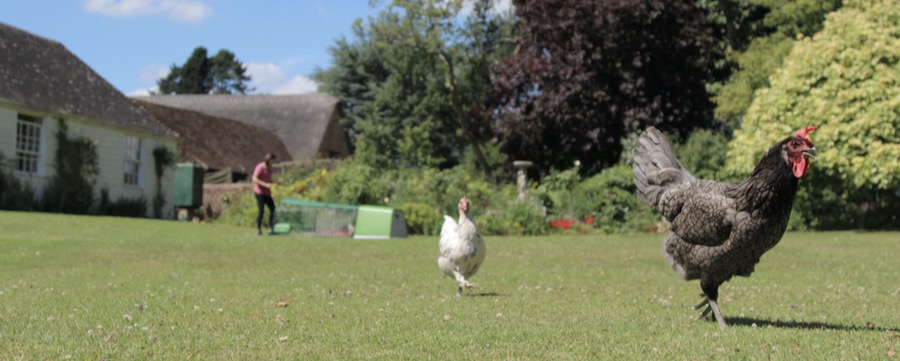
Chickens have a well-defined hierarchy. Every hen knows who’s boss. This, indeed, is where the phrase ‘pecking order’ comes from.
In everyday chicken life, the occasional peck and minor tussle is perfectly normal. But when the pecking gets out of hand, you will soon have semi-plucked chickens looking thoroughly miserable on their perches.
Bullying will always break out when new birds are introduced to a flock. This is all part of sorting out the new pecking order, everything will be calm and back to normal in a few days, usually.
Hens may peck themselves, too, with the same result – feather loss. However, you’ll be pleased to hear that in both cases – self-plucking and plucking others – the problem can be addressed and solved quite easily.
Overcrowding in the Chicken Shed
Whenever there is insufficient space, hens will begin pecking each other. The only time they’re content with cramped conditions is when they’re settling down side by side for a cosy night’s sleep. Overcrowding causes stress, and stress leads to violence. It begins with the pecking and general bullying of any chicken that sits lower down in the henhouse pecking order.
Providing more space is always the answer here. The minimum space required per chicken depends on the size of the breed; but it is always best to give the birds as much room as possible. As a general rule of thumb, you will need 2 to 3 square feet (0.18 to 0.28 square metres) per chicken in the coop, and 8 to 10 square feet (0.74 to 0.93 square metres) per chicken in a run. This is the bare minimum, though. If you own an Eglu Go that accommodates up to four hens, six is clearly too many. Two, however, is absolutely fine.
An overheated chicken shed may also cause pecking and plucking, as the high temperatures make the birds’ skin itchy and uncomfortable. Too much light has the same effect; although this is a problem that only really afflicts birds kept in artificial light to boost egg production.
 When Chickens See Red
When Chickens See Red
A hen may become the victim of pecking if she is unwell. Sometimes the other chickens will turn on an ailing companion. She will usually find a quiet spot to hide, and you will be able to intervene before things get out of hand.
If a wound is involved, however, the other hens will literally see red. Blood acts as a magnet for the birds, and they will pursue and peck at the wound, plucking surrounding feathers and making the injury worse, with obvious dire consequences. Deaths are not uncommon in these circumstances, and if the wound is combined with overcrowded conditions, cannibalism can occur.
The injured chicken must be isolated from the rest of flock until her wound is healed and she’s in top shape again. If you have a Walk in run for your chickens, partitions is a great solution that will prevent the other chickens from bullying the injured hen.
You can assist the healing process by applying anti-peck and healing lotions and creams.
The Chicken and the Vampires
In 99% of cases, a hen who pecks and plucks herself has parasites. The culprits are usually mites, tiny vampires who leave the chicken’s skin scabby and itchy. Lice and fleas have the same effect. An infested hen will not only look untidy and threadbare, she will also have a drooping comb and will be listless.
One type of parasite, the depluming mite, eats away at the roots of the feathers, causing them to fall out without any intervention from the hen. All these chicken-nibbling nasties can be deterred using spray-on or rub-on medicines.
If your chickens’ diet is low in protein (which will never be the case if their food revolves around good chicken feed pellets), they will look for it elsewhere. Insects and other invertebrates are good sources of protein; but so, too, are feathers. If feather pecking afflicts your flock, diet is another thing to add to the checklist when getting to the bottom of the problem.
When Pluck Runs Out
If your hens lay brown eggs, evidence suggests that you may have more problems with pecking and plucking than someone whose birds lay white eggs. This sounds bizarre, and the science is not conclusive, but observational studies have come to this conclusion. It is, however, largely a problem among chickens kept in large numbers for commercial purposes, and not a consideration the average backyard hen owner should worry about it. It’s certainly intriguing, though…
In most cases of pecking and plucking, you will be able to solve the problem by simple intervention. Give the hens enough space, and keep the chicken-sucking creepy crawlies at bay, and in most cases the problem is solved.
This entry was posted in Chickens on March 3rd, 2020 by linnearask
 Myths and history
Myths and history










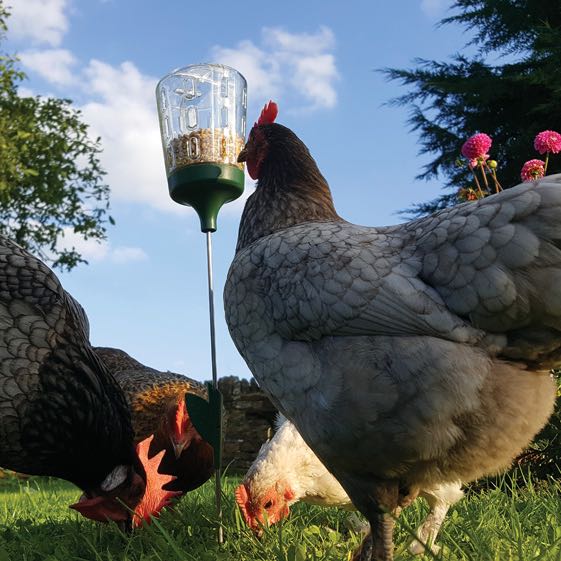
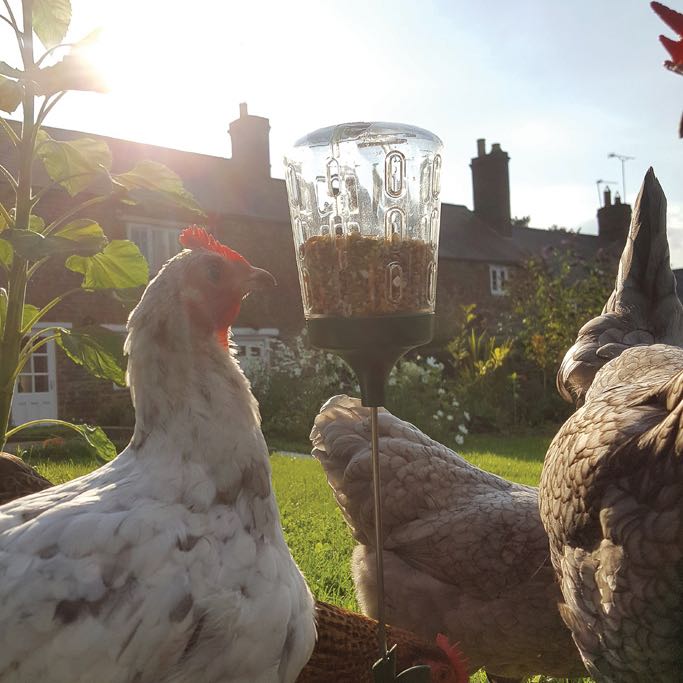



 When Chickens See Red
When Chickens See Red